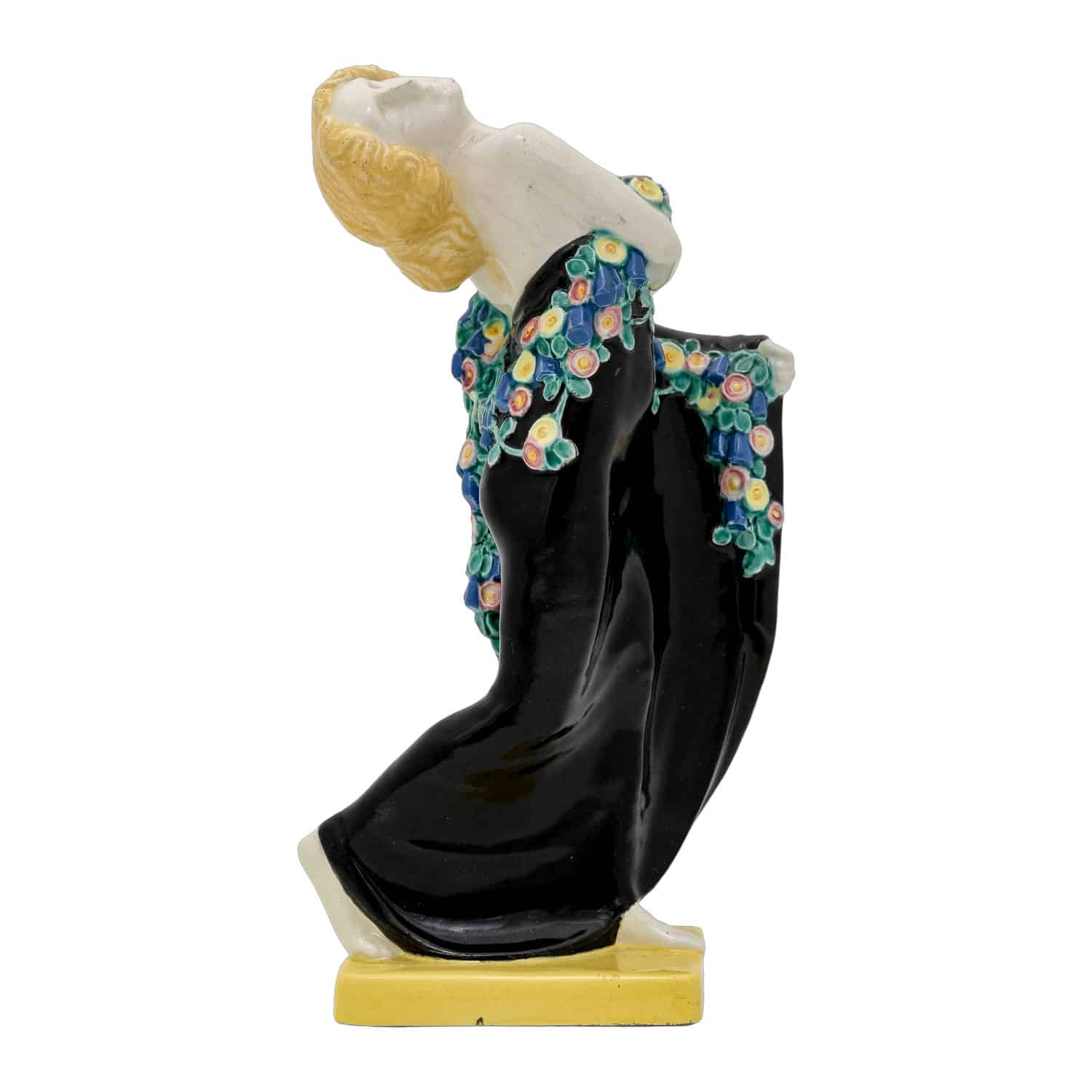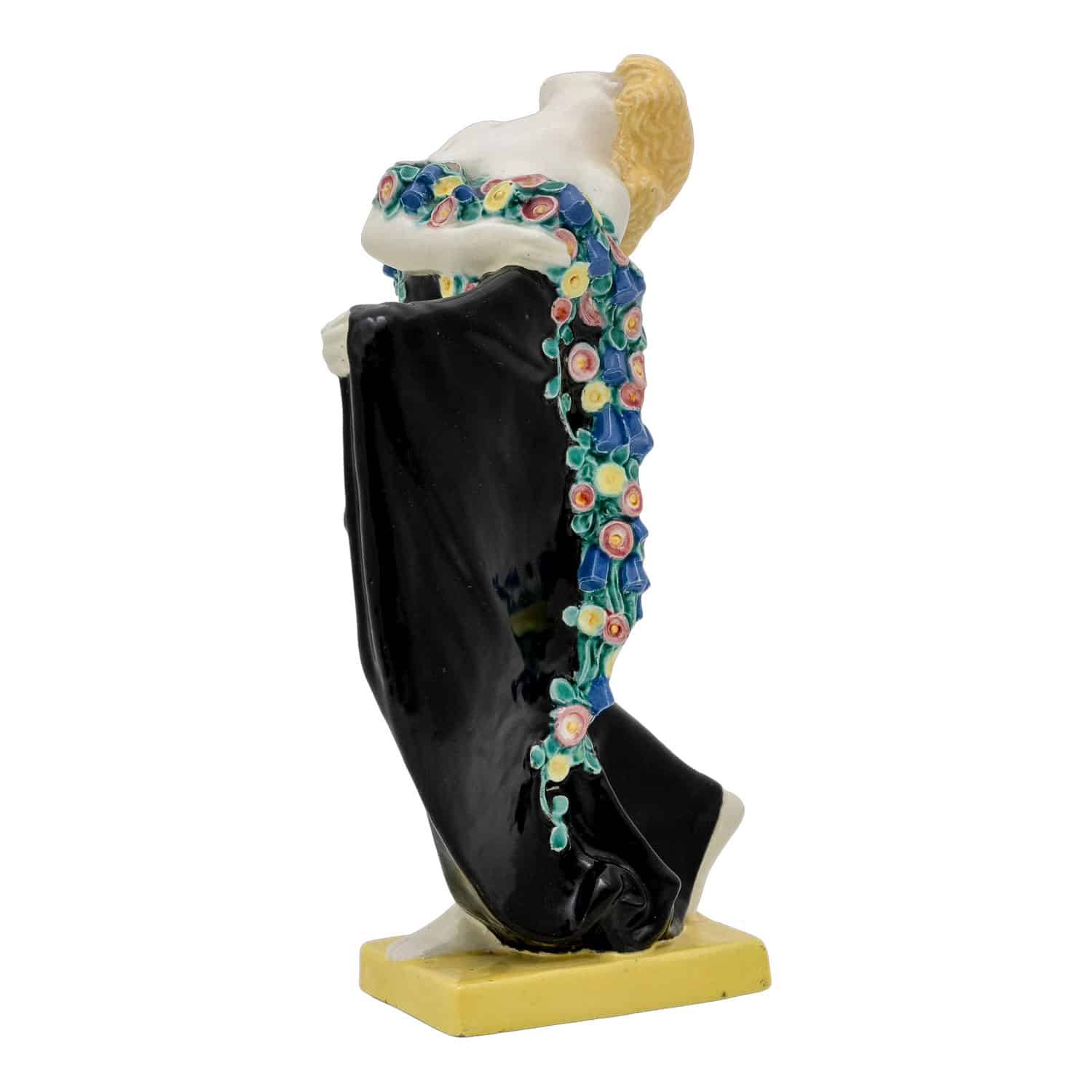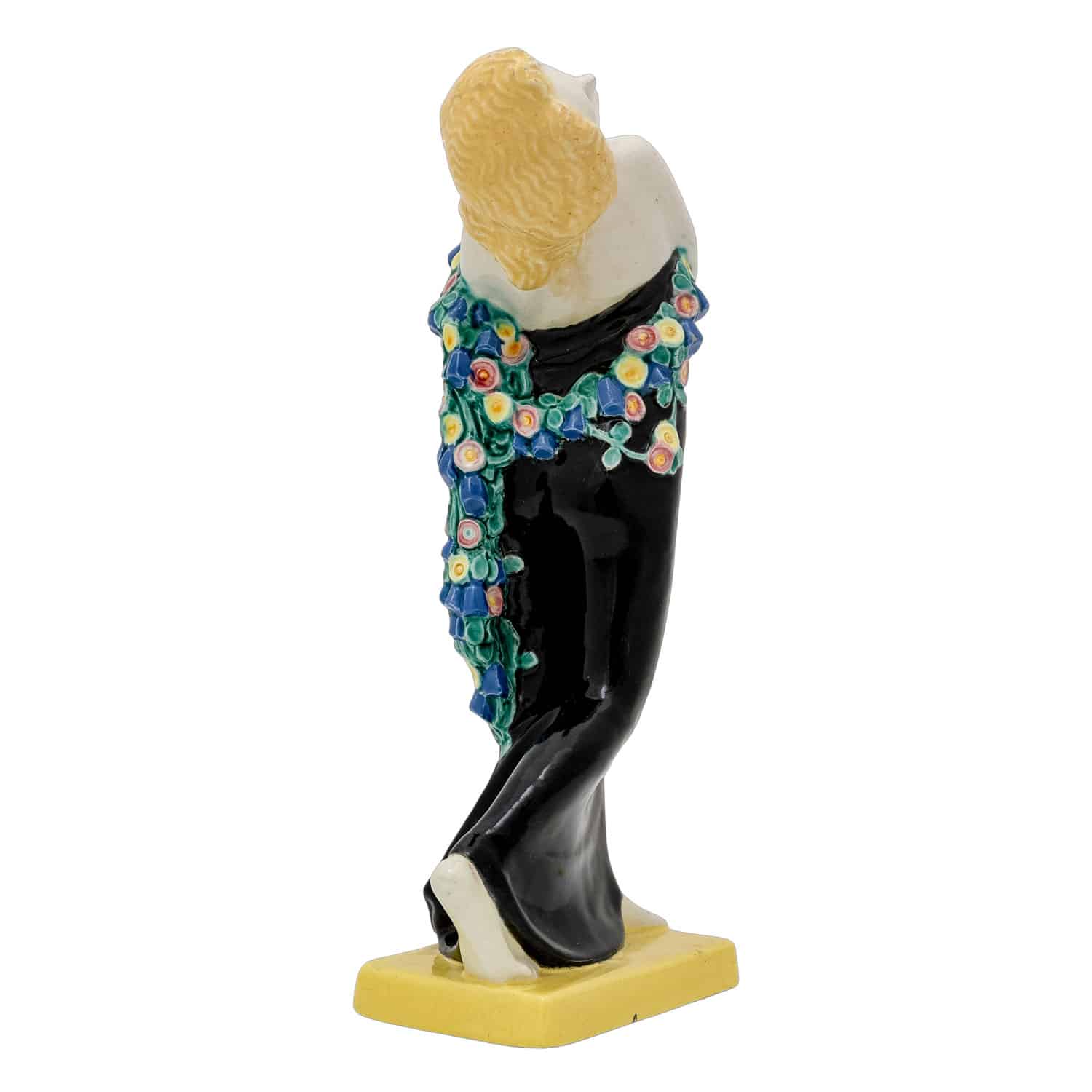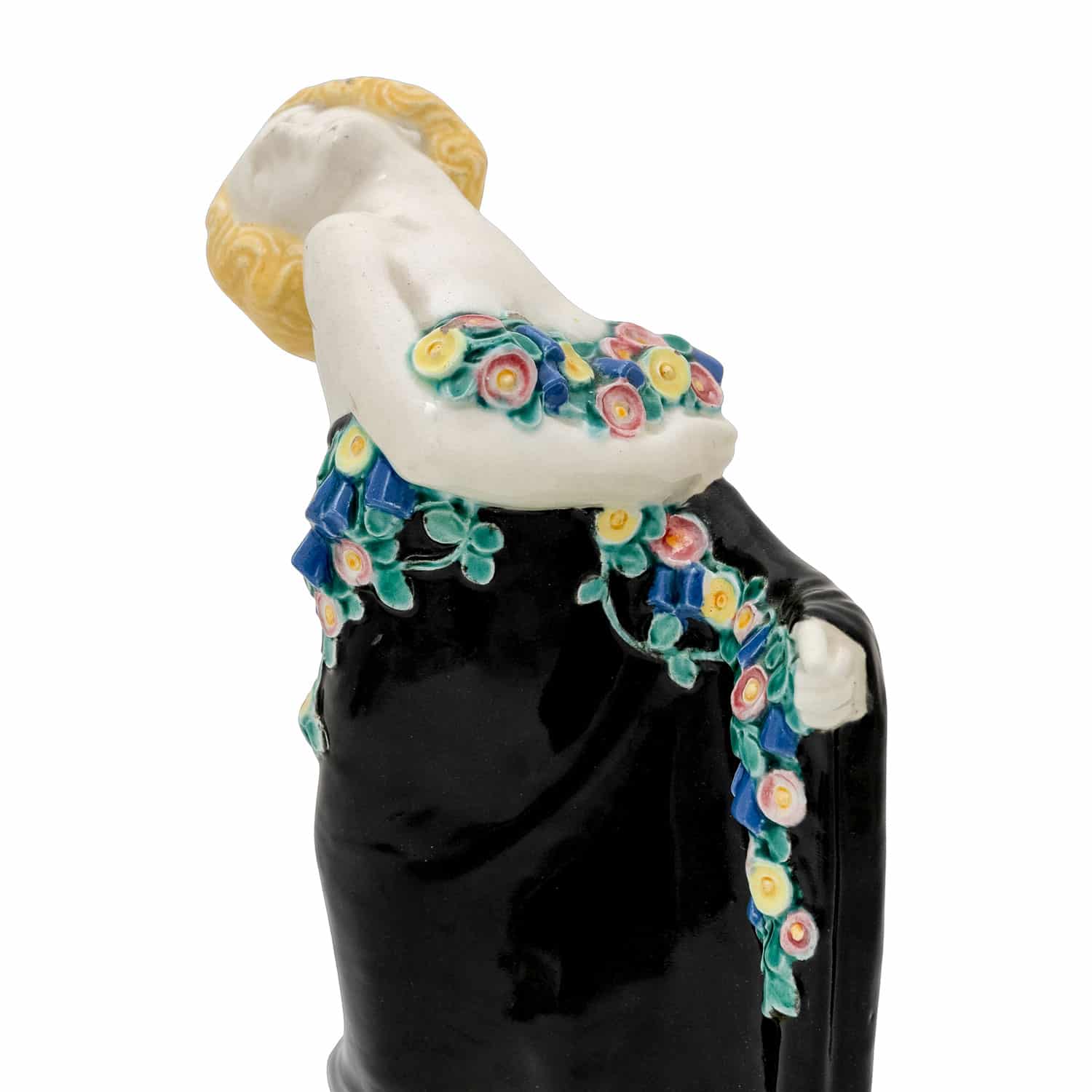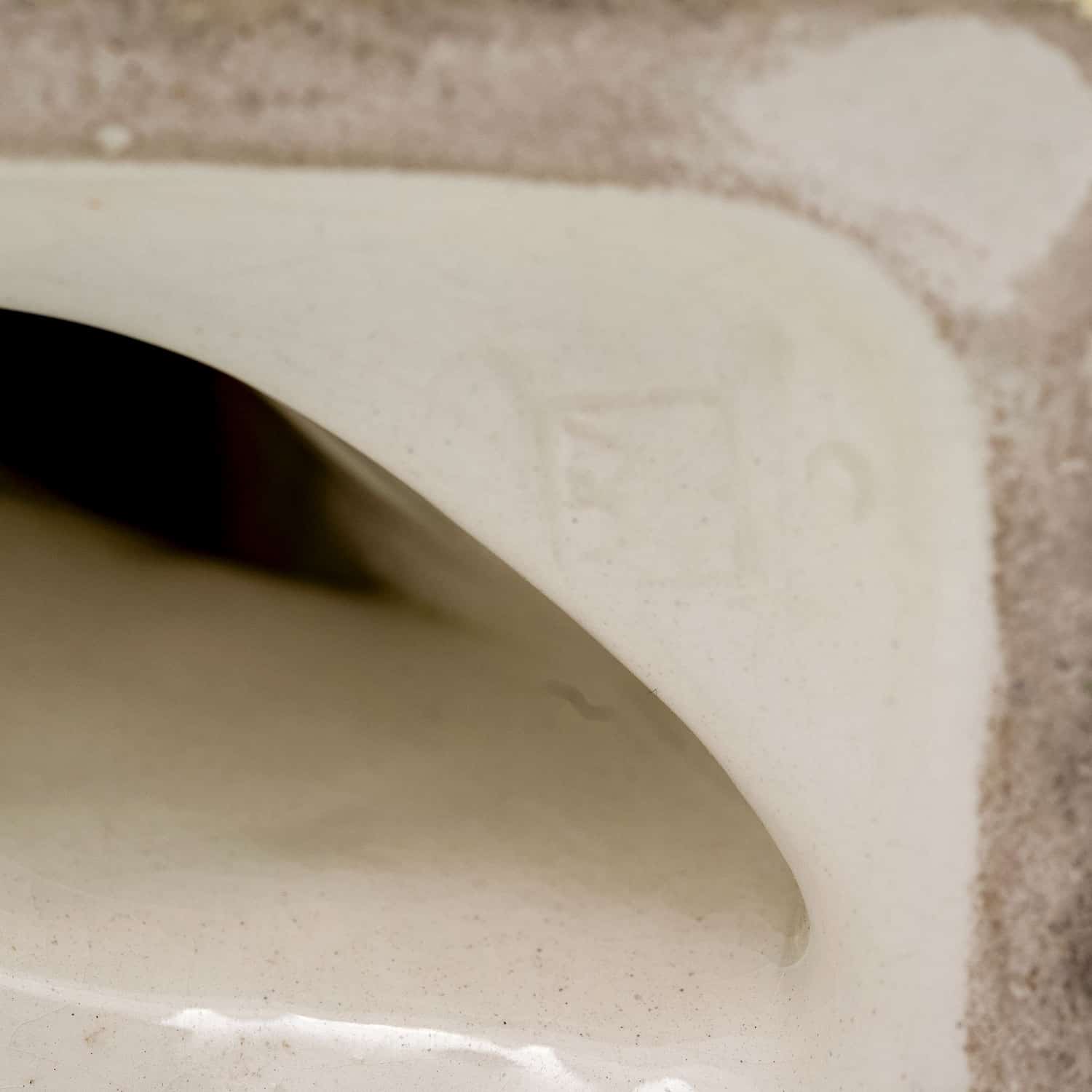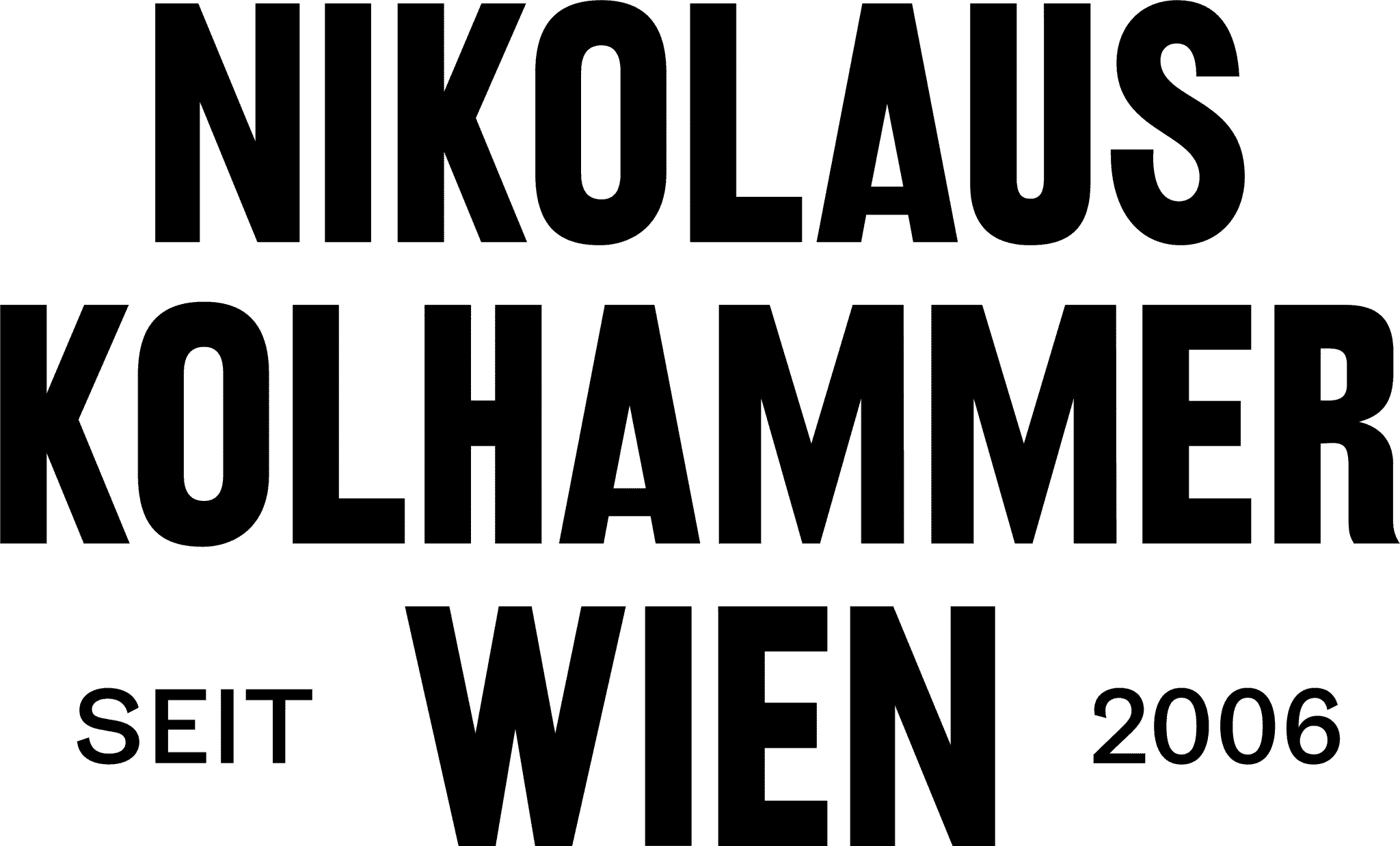Dancer Michael Powolny Wiener Keramik ca. 1907
Dancer looking to the right in black gown, design Michael Powolny, manufactured by Wiener Keramik, circa 1907, ceramics colorfuly glazed, marked
Description
In an elegant pose the dancer performs a swaying step in front of us, seductively looking over her shoulder. Her dress is lavishly adorned with flowers. The sophisticated hairstyle, the lavish decoration on her dress and flowing drapery offer Powolny ample opportunity to display all his virtuosity and technical finesse. With his dancers, Michael Powolny designed truly iconic statuettes that have become the epitome of Secessionist Viennese Art Nouveau ceramics.
Artist
Michael Powolny (Judenburg 1871 – 1954 Vienna) is one of the most famous ceramic artists of the Viennese Jugendstil. After his apprenticeship as a potter, he studied at the Vienna School of Applied Arts, where he also taught later on. He soon became a part of the inner circle of the Viennese Secessionists and was involved in the designing of important “Gesamtkunstwerke” (total works of art) in the spirit of the Wiener Werkstätte; for example, the legendary Cabaret Fledermaus in Vienna or the Palais Stoclet in Brussels. In 1905, together with Berthold Löffler, he founded the "Wiener Keramik", whose products were distributed by the Wiener Werkstätte. In 1912, the “Wiener Keramik” merged into the "Vereinigte Wiener und Gmundner Keramik", which continued to produce designs by Powolny and Löffler. Many of Powolny's large-format designs were also produced by the Wienerberger company from around 1914 onwards (sculptures, tiled stoves, architectural elements). In the decorative arts of Jugendstil, the name Powolny is associated in particular with the Secessionist figurines (Schöne Helene) and the popular seasonal putti. With his childlike, cheerful putti, Powolny had a decisive influence on the aesthetics of decorative sculptures of Viennese Jugendstil. Powolny also designed large figural ceramics, namely for the Stoclet Palace or the Dianabad. As a designer, Powolny also created glass objects, for example for the glassworks Johann Loetz Witwe or the traditional Viennese company J. & L. Lobmeyr. Today, Powolny’s imaginative and decorative sculptures as well as glass objects can be found in Jugendstil collections of important museums of applied arts, such as the MAK in Vienna.
Execution
Wiener Keramik (WK) was an art ceramics company that existed from 1906 to 1913. Its founders, Michael Powolny and Bertold Löffler, were both graduates of the Vienna School of Arts and Crafts. Powolny, as a skilled stove builder, brought with him the knowledge of ceramic materials, while Löffler was a trained graphic artist and painter. With their perfect workmanship and colorful glazes, their figurines and ceramic products are representative of the Viennese decorative arts of the period around 1900. In terms of motifs, they embody the aesthetics of that time, when the artists of the Vienna Secession progagated the penetration of all areas of life in the sense of the Gesamtkunstwerk (total work of art), and thus the decorative arts also significantly increased in value. Architects such as Josef Hoffmann integrated accessories of Wiener Keramik into the contemporary-modern interiors of Viennese Jugendstil and contributed to their fame. Powolny's four seasons putti range among his creations that are still best known today. Löffler designed utilitarian ceramics in black and white with gilded secessionist decor. Powolny and Löffler patrially owed the distribution of their objects to the cooperation with the Wiener Werkstatte. Indeed, their products were sold in Wiener Werkstatte showrooms from 1907 on. The much acclaimed Kunstschau (art show) in 1908 and various exhibitions in the Austrian Museum of Art and Industry certainly contributed to their artistic success. Despite its success, the company lasted only seven years until it was merged with Gmundner Keramik in 1913 for financial reasons.
Inquiry
By submitting the inquiry form, you agree to the use of your data for this inquiry. Privacy Policy


